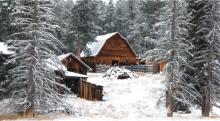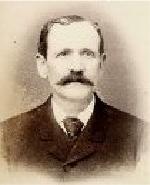Dick, thank you for your dedication and work you have put into the DHS website. I have been meaning to write you long before this but this past year has been challenging as my husband is having a lot of health problems. My time on the internet has been very limited but I always enjoy going to the DHS website to check and see what you and others have posted for all of us classmates and interested viewers. Thanks again, for creating the site and all of the hours of work you put into it.
I especially enjoyed seeing Stacy Nickelson’s photography article. When I saw the beautiful pictures, it brought back a lot of great memories and a song from years ago about the Black Hills.
It went something like this:
“The Black Hills of South Dakota
Ever, they're calling me
I sit and dream, and then I seem,
Once more all her beauty to see
The wind whispers through the pine trees
The birds sing a sweet refrain
Out there friends are true,
and heartaches are few
Take me back to the Black Hills again.”
That was all I remembered of the song. I was curious who had written this and decided to, see if I could find anything on the Internet. I found the following related article in a recent Rapid City Journal:
~~~~~~~~~~~~~~~~~~~~~~~~~~~~~~~~~~~~~~~~~~~~
Sheet-music collection pays tribute to Black Hills
Danie Koskan Rapid City Journal correspondent
Sunday, February 20, 2011 6:30 am
The Black Hills have awakened many a composer’s muse.
 |
Grace Mickelson sheet music from the 1920s-1950s
that is inspired by Black Hills |
Grace Mickelson has the notes to prove it. The 84-year-old Rapid City woman has inadvertently amassed a collection of sheet music over the years. All of it pays homage to the Hills. The retired teacher and her late husband, John, never set out to collect sheet music inspired by local landscapes. In their quest to gather rare books on South Dakota history, the couple stumbled upon several songs that celebrate the land they call home.
The Mickelsons acquired their collection from auctions. They bid on books, newspapers and magazines that recorded events in South Dakota or chronicled the history of Mount Rushmore.
Sometimes sheet music came with their purchase. Mickelson initially didn’t think much of the notes and lyrics that occasionally found their way into boxes of books she purchased at auction. “I was bidding on books,” she said. “I wasn’t into bidding on music. That was not a special interest of mine.” But then she began to notice where and when the sheet music originated. From what she can tell, much of it was published in western South Dakota during the first half of the 20th century.
Such local ties made those unintentional treasures too good to part with. “I save anything that has to do with the Black Hills,” Mickelson said . . .






